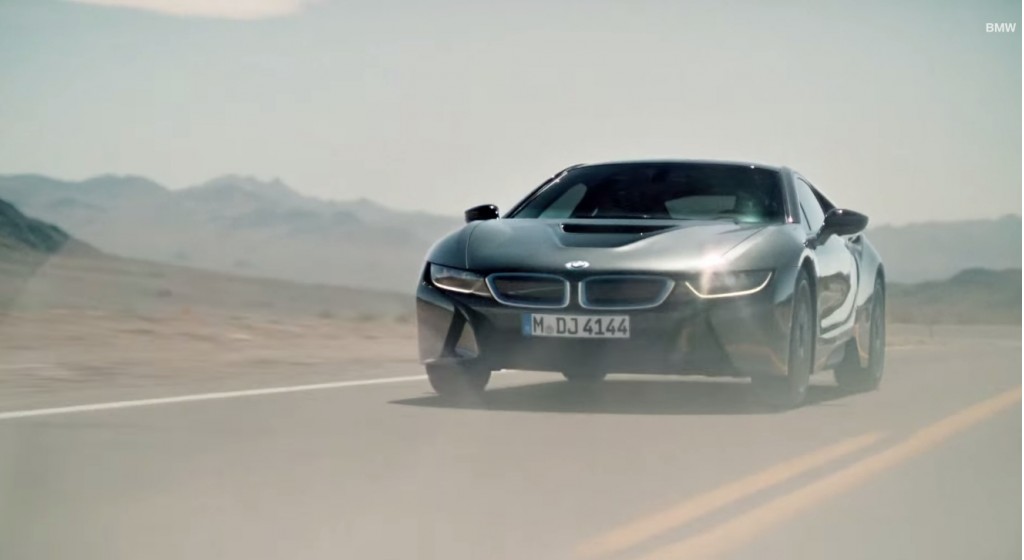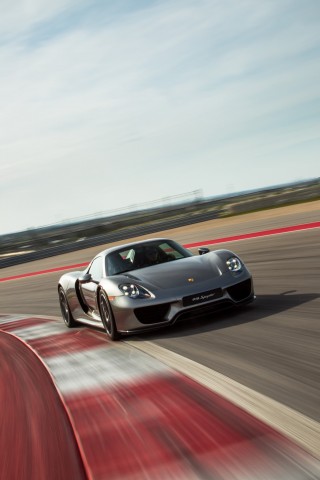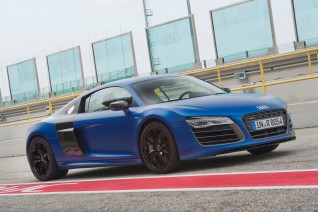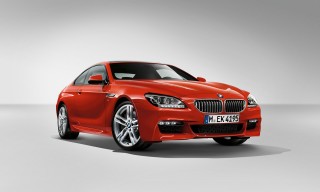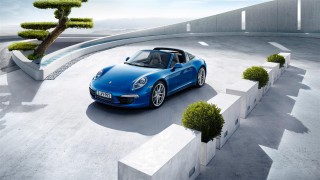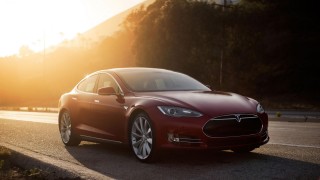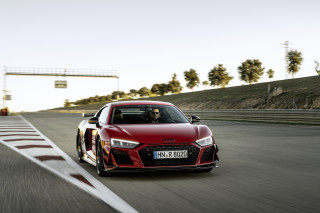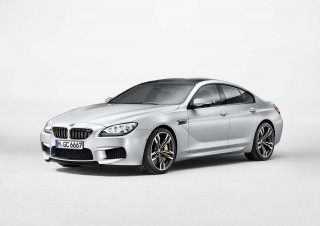Likes
- Sleek coupe looks
- Unparalleled fuel efficiency
- Calm all-electric running in town
- Electric boost in Sport mode
Dislikes
- Pricey for its performance
- Interior hardly luxurious
- Could suffer from nerd factor
- Small battery hurts tax credit
Buying tip
The 2015 BMW i8 is a ground-breaking new sports coupe with a plug-in hybrid powertrain that delivers several driving personalities from which the driver can choose.
There is absolutely no way to drive the 2015 BMW i8 without attracting attention everywhere you go. You might as well show up in a Batmobile, given the crowds that gather to watch the striking "bird wing" doors pivot up and away, above the roof, to reveal which glamorous international celerity clambers out.
But the i8 is actually a sport coupe for a new age of efficiency. When's the last time such a stunning car came standard with a three-cylinder engine--and a charge cord to plug its electric components into the wall? The sleek and undeniably sexy two-seat sport coupe shape uses its classic design cues to draw attention to some unexpectedly cutting-edge technology. It's not your grandfather's imported coupe, that's for sure.
The BMW i8 is the second, the most alluring, and the priciest model from BMW's revolutionary "i" sub-brand. The goal of the "i" cars is nothing less to reinvent the automobile for a new and more energy-efficient world. That label first spawned the boxy i3 electric car, but whereas that hatchback is all about elegantly soothing and miminal city transport, the i8 is meant to respond to the need for "a new era of sustainable performance," according to BMW. Like that of the i3, the i8's body shell is made of carbon-fiber reinforced plastic (CFRP), carried on an aluminum chassis that absorbs frontal crash energy and holds the powertrain.
The styling of the i8 has elements of traditional BMW, including the twin-kidney grilles at the front, but it also introduces elements unique to the BMW 'i' family. These include a groove between the upper and lower rear bodywork, wing-like fins at the rear, and blue trim accents. The 'i' cars also have a wheel and tire package (20-inchers here) that's unusually tall in order to cut aerodynamic drag and reduce rolling resistance.
Inside, the floating instrument pod and ultra-modern--almost Scandinavian--design are simple, but made of unusual materials including reclaimed wood veneer and fabrics using recycled fiber content. The driver and passenger sit low, as in any sports car, with the tall tunnel for the battery pack between them. The highly contoured lightweight seats proved comfortable for most occupants, though we'll be curious to learn whether that's the case over longer trips.
The powertrain of the BMW i8 actually consists of two separate power sources. Up front, an electric motor powers the front wheels, and at the rear, a high-output turbocharged three-cylinder drives the rear wheels. The combination gives the i8 the ability to run solely on electricity, as a sporty hybrid, or with both operating together for maximum performance. The independently operable pair of powertrains makes the BMW i8 what engineers term a "through-the-road" hybrid, with each propulsion mode coordinated not mechanically but via control software when they are used together for all-wheel drive and maximum performance.
The electric motor up front is rated at 96 kilowatts (131 horsepower) and 184 lb-ft of torque; it's used for all-electric running at speeds up to 75 mph. The energy comes from a liquid-cooled lithium-ion battery pack with a 5 kilowatt-hour usable energy capacity, mounted in the tunnel between the seats, giving the entire car a low, sleek profile.
In the rear, the i8 is the first BMW to use the company''s new 1.5-liter turbocharged three-cylinder engine, rated at 231 hp and 236 lb-ft of torque. (It's also used in the new third-generation MINI Cooper, in a lower state of tune.) The engine sends power to the rear wheels through a six-speed automatic transmission.
BMW quotes an electric range of up to 22 miles in "Max Emode", but the electric motor also provides "boost" to the engine when the car is running in its highest-performance "Sport" mode. The default mode, known as comfort, uses each powertrain or both in a more efficient manner, and the EPA rates the i8's total combined range between the charged battery and the gasoline tank at 330 miles. In addition to the three driving modes--Max E-Mode, Comfort, and Sport--the first two can be driven using the EcoPro function, which increase efficiency and range by capping acceleration and other energy uses.
The EPA rates the i8's electric range at 15 miles, and gives it a rating of 76 MPGe, or miles per gallon equivalent when running on electricity. MPGe measures the distance that a car can travel on the same amount of energy as that contained in 1 gallon of gasoline. When running as a gasoline hybrid, the BMW i8 gets a fuel efficiency rating of 28 mpg--decent for a high-performance sport coupe, but lower than comparable ratings for more pedestrian plug-in hybrid sedans and hatchbacks.
Whether buyers of six-figure sports coupes really prioritize fuel efficiency and sustainability is open to question. Clearly the BMW i8's light weight, advanced powertrain, and innovative materials will make it a technology icon. But after driving a prototype in April 2014, we are more inclined to view it as a sports car that's comfortable in the role of a touring car rather than as a track racer. Which is not to say that BMW doesn't have secret plans up its sleeve for even higher performance models.
The very first (2014) BMW i8 models were delivered in August 2014, and 2015s are now on sale. The base price is $135,700, which includes the mandatory delivery fee, and options can add $10,000 or more depending on how heavy-handed the buyer is on the specifications sheet. Among features available on BMW i8 cars in some global markets are the world's first laser headlights--where they're permitted legally--with LED lights fitted elsewhere.
2015 BMW i8 Styling
The classic sports coupe shape of the 2015 BMW i8 is drop-dead gorgeous; it attracts crowds, photos, and awe.
Any low, sleek, fast sports car attracts attention, but the 2015 BMW i8 seems to take that rule to a new level, even by the jaded standards of Rodeo Drive in Los Angeles. Perhaps it's the classic coupe shape--a low, fastback profile--amplified by the swing-up doors, which are hinged from the windshield pillar and known in German as flugeltur, or "wing doors." And indeed, with its doors, hood, and rear decklid open, the i8 even takes on a vaguely raptor shape, as if it's about to swoop down and pounce.
But shape is one thing; BMW's new design elements for its family of "i" plug-in vehicles are something else entirely. First you see the bright blue accents highlighting the twin-kidney grille openings, the arched aero element of the door sill, and the rear bumper shape. Then the groove between the upper and lower body panels makes itself known, with the waistline of the car sweeping back across the tops of the fenders and a pair of narrow fins that trail from the rails of the roof to the rearmost decklid edges to create an open "tunnel" on each side as the top half of the car narrows toward the rear.
The i8 is wrapped tightly around its 20-inch wheels, and the body sculpting successfully emphasize the horizontal lines of the car--despite a relatively tall tail with a slab-sided panel aft of the rear wheel arch. It's all in the service of reducing aerodynamic drag, which consumes more energy at speeds greater than 30 mph than does moving the car itself. BMW quotes a drag coefficient of 0.26, on the low end of the scale though not quite as low as that of the Tesla Model S.
The areas of the i8's front, rear, and door sills that aren't painted in body color are instead shiny piano black, with those blue accents, and while it may seem visually cacophonous, it all hangs together--and ensures the i8 won't be mistaken for any other vehicle.
Inside, the blue accents extend to LED ambient lighting and a delightful (optional) set of bright-blue seat belts. Like the smaller, more upright i3 city car, the BMW i8 coupe has a floating center display screen and a layered dashboard design. The upholstery in our test vehicles was a nice mix of black and ivory leather, black soft-touch plastics on the dash, and judicious matte-silver accents highlighting some of the character lines sweeping through the dash to give it visual flair.
The i8's inner trappings are considerably less avant-garde than the i3, however. No raw fiber-impregnated plastic, a more predictable dash layout. Despite distinctive touches--the cowl over the instrument cluster behind the wheel has an open top, for instance--it's much more recognizable as a BMW interior than the nearly Scandinavian austerity of the i3 cabin.
All in all, the shape of the BMW i8 is coherent, distinctive, and with its unusual but successful blue-accent treatment, fresh as well. Our only caveat would be that every test car on our drive event was the same silver color. The design themes might come off differently with a charcoal or black exterior that could cause the piano-black elements to disappear into the general shape.
2015 BMW i8 Performance
The 2015 BMW i8 isn't as fast as most people presume, but its all-electric ability and remarkable efficiency redefine the word.
The technology built into the 2015 BMW i8 plug-in hybrid makes it an entirely new kind of sports coupe, with only one other sports car using a similar powertrain. That's the Porsche 918 Spyder, the supercar that also plugs in and can run on electricity, engine power, or both together. But the Spyder comes in at almost a million dollars, so you might expect that the $140,000 BMW i8 would be a somewhat downsized version of that car--and you'd be right.
The important thing to understand about the i8 is that it's more of a touring coupe than a track car. That's not to say there won't be higher-performance versions in the future, but today's i8 strikes a commendable balance between performance and efficiency. While its price aligns it with more traditional competitors like the Audi R8 and the Porsche 911, say--it's a much different kind of car.
Starting at the rear, a 231-horsepower turbocharged 1.5-liter three-cylinder engine puts out 236 lb-ft of torque through a six-speed automatic gearbox to power the rear wheels. Separately, a large 96-kilowatt (131-hp) electric motor sits between the front wheels, powering them through a two-speed transmission with energy from a lithium-ion battery pack mounted in the tunnel between the front passengers and providing 5.1 kilowatt-hours of usable capacity.
The 2015 i8 can be driven on electricity only through its front wheels, as a hybrid using both powertrains alternating as necessary, or in high-performance all-wheel-drive mode--with each method controlled by quite a lot of software to keep all the pieces operating harmoniously. BMW quotes a total power rating of 362 hp with both powertrains operating at maximum output, giving a 0-to-62-mph time of just 4.4 seconds.
Drivers are faced, however, with a few more choices than in your average sporty car--among them three separate driving modes. To start off on all-electric power, the "Max e-Mode" setting keeps the i8 running electrically up to freeways speeds of 75 mph--although hard acceleration past a stiff detent in the pedal will switch on the engine for extra power in emergency situations, and then the driver must re-select "Max E-Mode" again.
Once the pack has been depleted (it's EPA-rated at 15 miles), the i8 segues seamlessly out of "Max e-Mode" and into "Comfort" mode. Here, it becomes fundamentally like a hybrid, starting off under electric power up to as much as 40 mph depending on load, then firing the engine when more power is required. But this hybrid mode only recharges the battery to about 1.3 kWh--enough for hybrid use--just a fraction of its full capacity once plugged in to recharge.
Regenerative braking is much stronger in E-Mode than in hybrid mode, but easily learned to let drivers coast down to a stop using the brakes only at the very end.
At any time, a driver can flip the car into its "Sport" mode by pulling the shift lever to the left. Immediately, the car's personality changes. A tachometer fires up to replace the power meter, the instrument faces take on a red glow, and a different and much more aggressive version of the powertrain control software takes over.
In Sport mode, flooring the i8's accelerator switches on the electric motor in front--accompanied by a "Boost" notice in the tach--to give the car that 4.4-second acceleration past 60 mph. And, among other differences, it uses overrun to recharge the battery pack well above the minimal hybrid levels used in "Normal" mode, meaning that it's fully recharged, the car will deliver sustained full electric power far beyond that provided under normal use. At speeds above 75 mph, the two-speed transmission connected to electric motor shifts into the higher of its gears to provide torque right up to the car's top speed--around 135 mph, perhaps higher. This at least comes close to the performance that the racy looks promise, but especially at higher speeds, it's far from your high-end Audi R8 or Porsche 911.
Despite all the power being shuttled around the chassis, the BMW i8 has pleasantly neutral handling and precise electric power steering with decent (simulated) feedback through the wheel. Driven aggressively, it held its own on the twisting canyon roads above Los Angeles--though a skillfully driven Lamborghini, McLaren, or high-end Porsche would still leave it behind fairly quickly. In Sport mode, the ride remained compliant enough that there was just a trace of bobbling if pavement irregularities appeared on hard corners.
We did observe a handful of small discontinuities in the prototype i8s we drove in April 2014, almost six months before the car went on sale. It's a brutally complicated programming task to manage all the potential combinations of driving conditions, power demand, braking, sensor inputs, and the rest, and BMW is undoubtedly still tweaking the last little elements of its control software to handle those rare "edge case" situations.
A driver who understands the car's different personalities can effectively use the BMW i8 as three different vehicles (all of them with its striking looks). On shorter trips around town, it can be a quiet, smooth, calming all-electric car that effortlessly keeps up with most traffic. For longer or more varied trips, it's a seamless hybrid that should deliver good fuel efficiency. And at those times when there are good roads without traffic, the i8 can become a much faster sports car.
It's just not going to be straight-across competition for many of the cars in its price range. Whether or not that matters is open to debate; looks may sell every one of the few thousand i8s BMW will build each year, regardless of powertrain.
2015 BMW i8 Comfort & Quality
The 2015 BMW i8 is a well-built and comfortable touring coupe for two, but ignore the two rear seats.
The 2015 BMW i8 may nominally be a four-seat sports coupe, but don't believe it. With normal-sized adults in front, very little that's larger than a backpack will fit into the heavily contoured rear seats. It's effectively a two-seat car, though since that's what it looks like, no harm is done.
Entering the i8 takes a bit of training, since the bottom cushion of the seat is easily 6 or 8 inches below the level of the door sill. The passenger actually has the easier task, since there's no steering wheel to get in the way. Entering and exiting the driver's seat gets smoother with practice, but we left more than one scuff on the outer edge of the dashboard in the process--and drivers or passengers in dresses or short skirts will require an additional round of planning.
Once inside, the driver and passenger sit low in heavily contoured seats, with the tall center tunnel containing the battery pack separating them. The seats were comfortable over a few hours of travel, though we can't comment on their enduring comfort over a full day's driving. There's not a lot of storage space inside, though: the "wing doors" have no bins in them, for obvious reasons, and there's just a pair of shallow bins on top of the console, since the battery pack sits just underneath.
The ride is firm, even jiggly on some surfaces, but remains controlled, undoubtedly due to the low-rolling-resistance tires combined with the frequently broken surfaces of Los Angeles surface streets.
In electric mode, a spaceship whine from the electronics was audible; at higher speeds, tire noise intruded if the engine remained off.
With the engine mounted transversely behind the seats, separated by a bulkhead, mechanical noises aren't as prominent as in front-engine cars. Under acceleration, the BMW i8's three-cylinder engine--which has a distinctive, uneven gurgling idle that reminded us of a motorboat engine--rises to a pleasant howl. But that's not exactly the car's natural sound: BMW has used a sound-generating chip to tune the engine sound by adding frequencies to its natural note, based on road speed and engine revs. One nice feature is the audible honk through the exhaust on upshifts before the engine speed lowers to match the new, higher gear.
There's cargo space in two small compartments front and rear, but as with many cars of this class, soft luggage is strongly advised.
2015 BMW i8 Safety
The 2015 BMW i8 comes with all expected safety equipment, but hasn't yet been tested by the NHTSA or IIHS.
The 2015 BMW i8 plug-in hybrid hasn't been crash-tested by either the National Highway Traffic Safety Administration (NHTSA) or the Insurance Institute for Highway Safety (IIHS). And give the low volume of sales projected for this $140,000-plus sports coupe, it may not get tested for a while--if ever--by those bodies.
One or both of those entities is likely to test the BMW i3 electric car, however, which uses similar construction to the i8: a body shell of carbon-fiber-reinforced plastic (CFRP) sitting on top of a rolling aluminum platform that carries both the running gear and the front and rear crash structures. Early assumptions are that the i3 will do well, since all eyes will be on the first high-volume car to use carbon fiber as a structural element.
BMW has tested the battery extensively in crash simulations and tests, and is confident that its central location between the axles and in the center tunnel of the car will give it the maximum protection in any circumstance. Otherwise, the BMW i8 coupe comes with the usual suite of safety equipment, including six airbags: a pair in the dash for front-seat occupants, side airbags in the backrests of the front seats, and side-curtain airbags to protect the heads of all passengers.
One innovative safety feature is the world's first laser high-beam headlights, now offered on the i8 in Germany but not yet approved for sale in the U.S. A night-time demonstration of these lights, which have auto-dimming that senses the light of oncoming cars, appeared to give a clear, bright, almost daylight-quality pool of light for a far longer distance in front of the car than any other high beam we've experienced. Laser headlights won't be offered on the BMW i8 unless or until they are certified as legal by the National Highway Traffic Safety Administration, but we hope that happens soon--they're spectacular. Until then, buyers will have to make do with LED headlights.
2015 BMW i8 Features
The 2015 BMW i8 has all the latest electronic features, and some more specific to its plug-in hybrid powertrain as well.
The 2015 BMW i8 plug-in hybrid sports coupe won't reach dealers until September 2014 at the earliest, and BMW has not yet released information on the trim levels, standard features, and options it will be offered with.
The i8 models on the test-drive event were all likely high-end models, with niceties like two-tone black and ivory leather upholstery, the bright-blue seat belts we liked so much--those we confirmed would be optional--and a full suite infotainment options, including a navigation system, satellite radio, and of course the smartphone app for controlling your i8 remotely.
We do know that while the standard 20-inch wheels are 7 inches wide in front and 7.5 inches at the rear, with tall, narrow 195/50 and 215/45 tires, there will be at least one optional wheel with wider 215/45 and 245/40 tires.
An option that may or may not make it to the U.S. are the breathtaking, groundbreaking laser headlights, which would be a first in the market if BMW gets permission from the NHTSA to offer them. At the moment, the government agency is mulling whether to certify the new-technology headlights, which provide as close an approximation to clear white daylight in front of the car as anything we've seen--and come with auto-dimming that may be able to sense oncoming cars even before the driver.
We know the base price of a 2015 i8 will be $135,700, including the mandatory delivery fee. If the new plug-in hybrid follows BMW practice, a fully optioned top-of-the-line model could run to $160,000 or more.
BMW will very likely be able sell every i8 it sends to the U.S. But it will remain a rare car, with just 1,000 planned for the first year, and likely no more than 5,000 a year after that. And it's a bit of a gamble for BMW; it remains to be seen whether its striking looks and multiple driving personalities will earn enough fans to justify the price tag. Certainly Tesla proved it could sell 1,000 or more battery-electric Roadsters several years ago, but will the BMW i8 have the same cachet this year the Roadster did in 2008?
2015 BMW i8 Fuel Economy
The 2015 BMW i8 is the most efficient sports coupe around, with about 15 miles of all-electric running and a small engine.
Its looks are a knockout, but tell the people swarming a 2015 BMW i8 to take photos with it that the sexy sports coupe plugs in to recharge, is rated at 15 miles of electric range by the EPA, and has a three-cylinder turbo engine, and you'll get reactions ranging from awe to utter confusion.
BMW says the i8 coupe launches a "new era of sustainable performance," although the importance of fuel efficiency and sustainability to buyers of six-figure sports cars is debatable. Still, the light weight, advanced powertrain, and innovative materials--carbon-fiber-reinforced plastic (CFRP) body shell and aluminum chassis--should make the BMW i8 an instant technology icon.
As well as the 15-mile electric range, the EPA gives the 2015 i8 an efficiency rating of 76 MPGe. That number refers to the distance the car can travel electrically on the same amount of energy as is contained in 1 gallon of gasoline. The 2015 i8's fuel economy when traveling under engine power is rated at 28 miles per gallon combined--decent for a high-performance sport coupe, but lower than comparable ratings for more pedestrian plug-in hybrid sedans and hatchbacks. Premium gasoline is recommended, and the total range between the electric and gasoline powertrains is rated at 330 miles.
On our test drive, we saw a range of 14 miles with the pack charged to more than 80 percent, so we'd expect that range figure to be about right. Part of what delivers these figures is light weight; the i8 coupe is only about 3,300 pounds despite having an engine, a battery pack, and an electric motor. In addition to the three driving modes--Max E-Mode, Comfort, and Sport--the first two can be driven using the EcoPro function, which increase efficiency and range by capping acceleration and other energy uses.
Nonetheless, if you ignore the now out-of-production Tesla Roadster, the BMW i8 is one of just two sporty cars today that plugs in--the other being the Porsche 918 Spyder supercar, which is lightning quick and costs almost one million dollars a copy. So for the moment, assuming that the BMW i8 delivers more than 10 miles of battery range--as it did on our test drive--and that its engine will be more efficient than the flat sixes, V-8s, and V-10s of its nearest competitors, we rate it a 10 for efficiency.
BMW quotes an electric range of up to 22 miles in "Max Emode", but the electric motor also provides "boost" to the engine when the car is running in its highest-performance "Sport" mode. The default mode, known as comfort, uses each powertrain or both in a more efficient manner, and the EPA rates the i8's total combined range between the charged battery and the gasoline tank at 330 miles.
